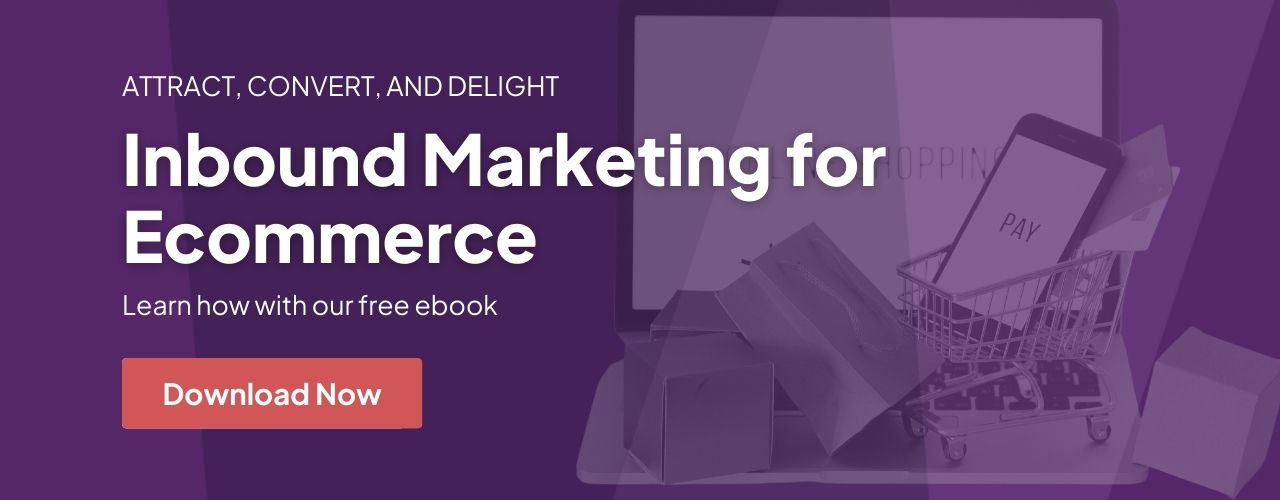Worse, many left their blogs to be the permanent home for ancillary content such as corporate news, general announcements, events, etc. All self-serving content where potential customers learned nothing!
Instead, businesses focused more on landing pages that introduced their brand, product, or service. No one thought about the blog as part of their content strategy, a powerful SEO tool and dynamic sales driver!
What is a Blog?
The word "blog" is short for "weblog" and started as a way to post journal-style text entries typically listed in reverse chronological order. The blog platform allowed writers to share their views, opinions, and research on a specific subject.
Why Should You Contribute to a Blog?
You must write for your blog because your future customers have many questions. They turn to Google every day to ask those questions and want real, unbiased answers without being sold to.
You can use your blog a tool and opportunity to educate a wave of new prospects.
Your Blog = Search Engine Power
- What if I said you could harness the power of Google search with your blog? Would you believe me?
- What if I told you that this blog you're reading and all of our clients' blogs generate 90% or more of the site's organic traffic? It's a fact!
- What if I told you the blog can 10x your lead generation? Would that interest you?
See the example below for a blog we started writing for in January 2019.
In just 6 months, organic traffic and lead conversions exploded! The power is real!
/Imported_Blog_Media/inbound-marketing-results-750x413-Jun-28-2021-10-50-11-55-PM.gif?width=750&name=inbound-marketing-results-750x413-Jun-28-2021-10-50-11-55-PM.gif)
How to Write a Blog Post
Learning how to write a blog post that converts is a bit like riding a bike. Once you learn the skills, you'll be able to reproduce stellar results - every time.
Think of blog writing as a gourmet meal that requires ingredients, methods, and preparation to perfect. Writing a blog post is no different, and once you perfect it, you'll be on your way to more site traffic and leads.
Follow our blog format below to get you started:
1. Get to Know your Audience
Before you develop your blog topic, you must know more about your target audience. So, what do you know about your audience? Consider:
- What challenges are they experiencing?
- Are they trying to solve a problem?
- Do they have specific interests or needs?
- What type of content are they looking for (i.e., ebook, list, presentation, spreadsheet, template, etc.)
- What's their motivation (i.e., purchase, comparison, review, fact-finding, etc.)
Once you understand your audience you can align your content to be the answer to their search query.
For example, let's say you sell Marketing software for start-ups. Your audience may be searching for creative ways to market their new company on a budget, so starting research around that topic might be a good idea.
Define your Buyer Persona
Okay, so how do we get to know our audience better? It starts with creating a buyer persona, which allows you to write blog posts that resonate better.
In sales and marketing, we always like to define a buyer persona. It refers to the attributes of the person who works for your ideal customer. Examples include elements such as age, gender, role, online hangouts, etc.
When we define our buyer persona, we're starting to shape the members of our audience. This is important as it allows us to write purposefully and for someone.
/Imported_Blog_Media/buyer-persona-marketing-mary-750x423-Jun-28-2021-10-50-11-01-PM.jpg?width=750&height=423&name=buyer-persona-marketing-mary-750x423-Jun-28-2021-10-50-11-01-PM.jpg)
How are Competitors Courting your Audience?
To see what the competition is up to, perform some sample searches on broad topic phrases or visit 3 to 4 competitor blogs. This shouldn't be confused with topic research merely to get a sense of what others are blogging about.
Although you don’t want to copy their ideas, it shows you what topics they develop. Seasoned bloggers create a content calendar to map out their content strategy, which keeps good SEO signals flowing to Google. Typically, an editorial calendar might follow closely to the seasonal calendar to take advantage of sales opportunities for an annual theme - like "Summer, Labor Day, etc."
2. Develop your Blog Post Topic
Once you get to know your audience, the challenges they're trying to solve, and what content your competitors are creating, you can narrow your focus to a specific blog topic. You also must validate your topic ideas using tools built for keyword research.
Another great source of topic ideas is the selection of free keyword tools. Plug in what your company’s about, and you’ll get back long-tail keywords that might give you some content creation ideas.
Keyword Research for Blog Topics
There are many keyword resources you can use for blog topic research. Below are a few we use for every blog writing project:
- SEMrush – note this is a paid tool, but in our humble opinion, is the most complete set of SEO tools.
- Reddit or Quora – solid resources to find questions other people in your industry are asking.
- Answer The Public – a free tool for you to enter your keywords, and you'll get tons of questions in return.
- Twitter Advanced Search – type your keyword and select the filter “questions” to see the questions people in your industry are asking.
3. Write a Catchy Headline
Pique a reader's attention with a catchy headline. “How Green Widgets Saved the Word in 1980” is more interesting than “Learn about Green Widgets.” The trick is to grip your target audience with a headline that’s likely to keep them reading.
Several free analyzer tools can help you gauge the appeal of your headline. The SEMrush headline tool is featured below.
/Imported_Blog_Media/write-a-catchy-headline-4.png?width=750&name=write-a-catchy-headline-4.png)
Boring headlines will turn readers away. Even if your post is written well, it won’t capture the attention of the audience. The trick here is to encapsulate what the post is all about. Then, you summarize it in a way that stirs the imagination of the reader.
Readers won’t click away from your page when they want to know more.
4. Create Blog Post Content with Purpose
The primary purpose of these pages was to communicate what their company, product, or service did.
In the process, they overlooked one of the most critical methods for converting leads into buyers. However, there’s more to blog writing than meets the eye.
It’s not enough to write a quick first-person narrative of what happened at the factory that day. Similarly, it shouldn’t be a long-winded “buy me” post that’s a little more than an advertisement with many product links sprinkled into the narrative. Rather, learning how to write a blog post that converts introduces you to the mix of art and science.
It integrates inbound sales finesse with solid writing. Similarly, it should read like something that you wouldn’t mind seeing on a blog. If it bores you, there’s a good chance that it won’t interest your audience, either.
5. Create Visually Aesthetic Content
You're wrong if you think the audience will read every word you write. Instead, most readers skim through the information. The longer your post is, the more likely it is to get scanned. That’s why it needs to have a visual appeal.
One of the biggest mistakes you can make is having the blog post look like a page from a textbook. Long paragraphs without breaks require exceedingly dedicated readers. And even they might not stay on your page.
Think of the post as a work of art.
Subheadings
These headings label the various paragraphs. They tell the skimmer what each one is about. If the reader doesn’t need a brief history of green widgets, they might skim over to the product's pricing structure. It also enables the reader to look ahead and get a feel for where your writing is going. This can keep them interested.
Bullet points
Within the paragraphs, break down essential facts with bullet points. Bullet points are super easy on the eyes and make skimming simple. Writing a blog post without bullet points is typicallyn’t a good idea. Also, remember that bullet points force you to be succinct, which is a great asset when blogging commercially.
Rich media
Images make the post look pretty. Besides that, they’re mnemonic devices. Your audience can easily remember that green widgets help computers process three times faster when you tie the information to a picture. That’s in part because the human brain processes images more quickly than text. Several free image websites let you pick from a broad range of available graphics.
6. Search Engine Optimization Isn’t Optional
You’ve heard about SEO. Maybe it scared you. However, search engine optimization isn’t something you can put off. Instead, it’s one of the most crucial blog writing tips.
Without SEO, your prospective customers won’t find the posts. Search engines sort content by usefulness. For example, they look for meta titles and meta descriptions that harmonize with what most people search for. Google snippets take pertinent parts of your text and place them near the top of the search engine results. That’s a great way to drive traffic to your post.
Be Relatable in Search
Therefore, your keywords should be in line with the search terms someone might use in Google search.
Most importantly, your blog post must focus on a primary topic. It’s a common misconception that you should include as many keywords as possible in your copy.
However, this not only makes the writing cumbersome but also makes it clear that you drafted the post only for the sake of Google. Readers catch on to this practice quickly.
This hurts your credibility. Almost any reader who’s subjected to one of these posts won’t stick around to read any others. While it might help you in the short term to get clicks, it hurts in the long run.
Internal Content Linking
One vital element of SEO is interlinking with content relevant to a core topic. This typically refers to blog posts, landing pages, or other media. These links are excellent for encouraging readers to explore more of your site AND for showing topical relevance for a topic cluster (see image below).
/Imported_Blog_Media/content-topic-clusters-750x537-Jun-28-2021-10-50-08-37-PM.jpg?width=750&name=content-topic-clusters-750x537-Jun-28-2021-10-50-08-37-PM.jpg)
7. Tell the Reader What to Do
In copywriting, this is referred to as the call to action. What do you want readers to do? You caught their attention. They read or skimmed through the content. But what comes next?
- Social media shares. Maybe you want to grow your social media reach. In this case, ask your readers to share your post on their social media profiles. It’ll introduce your brand and product lines to new audiences. Witty, funny, or image-rich posts are ideally suited for this call to action.
- Purchase. The most common action that bloggers ask for is a sale. You want the reader to buy the product you mention in the post. Put in a link to the sales page. Make it easy for the shopper to click just one link and head to the checkout.
- Connection. In some cases, blog writers acknowledge that the reader might not yet be ready to make a buying decision. This is the case when you want to help the reader move along the sales funnel. In this scenario, you might ask the consumer to connect with a sales representative to learn more about the product and talk about their needs.
Finishing a blog post without a call to action is incomplete. It’s a bit like saying that now you know how to write a blog post that converts – and leaving it at that.







